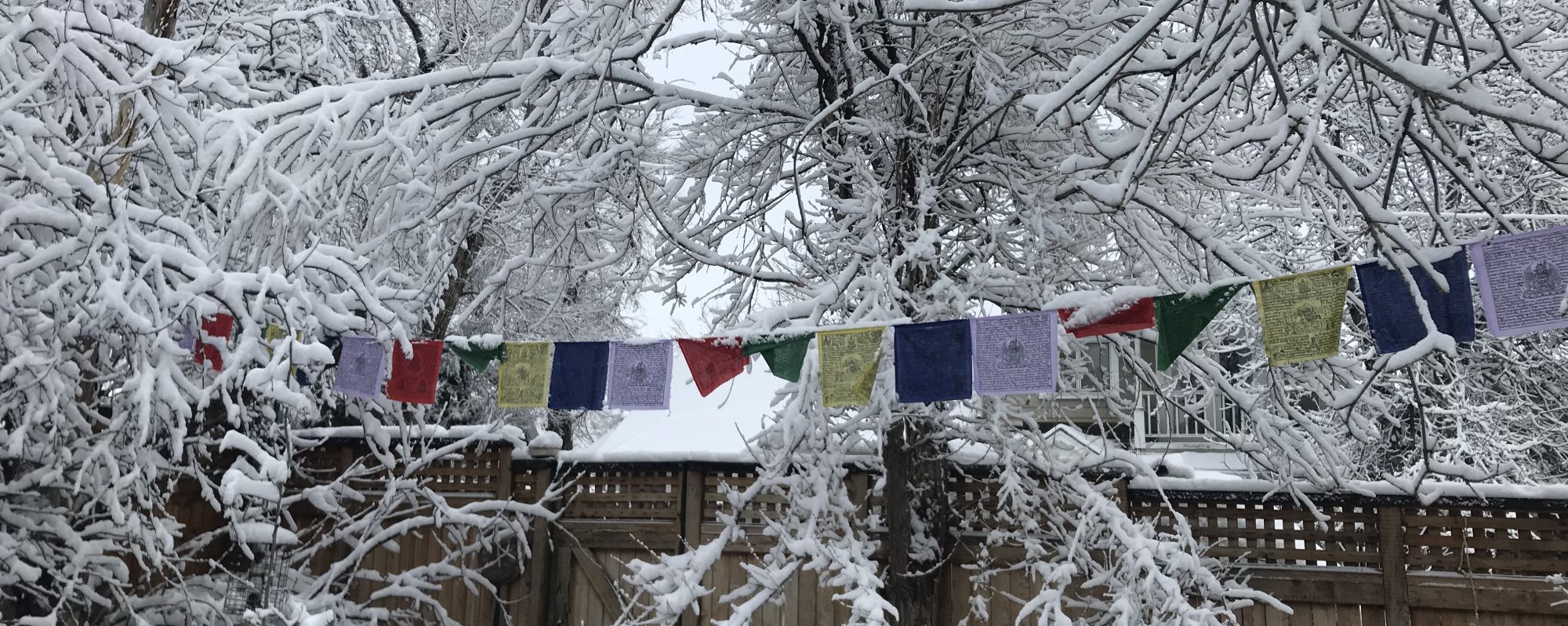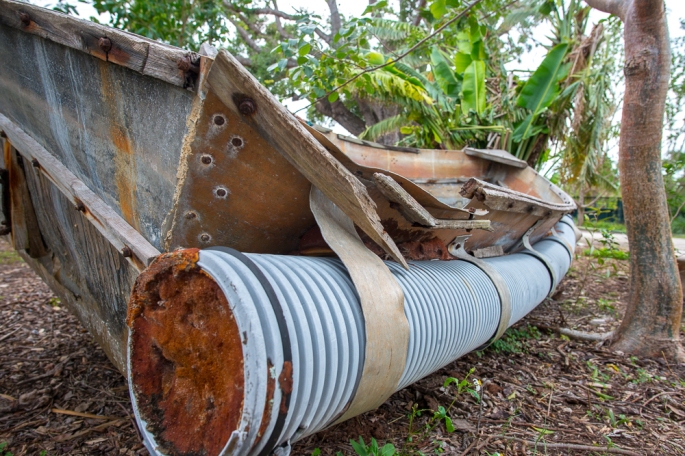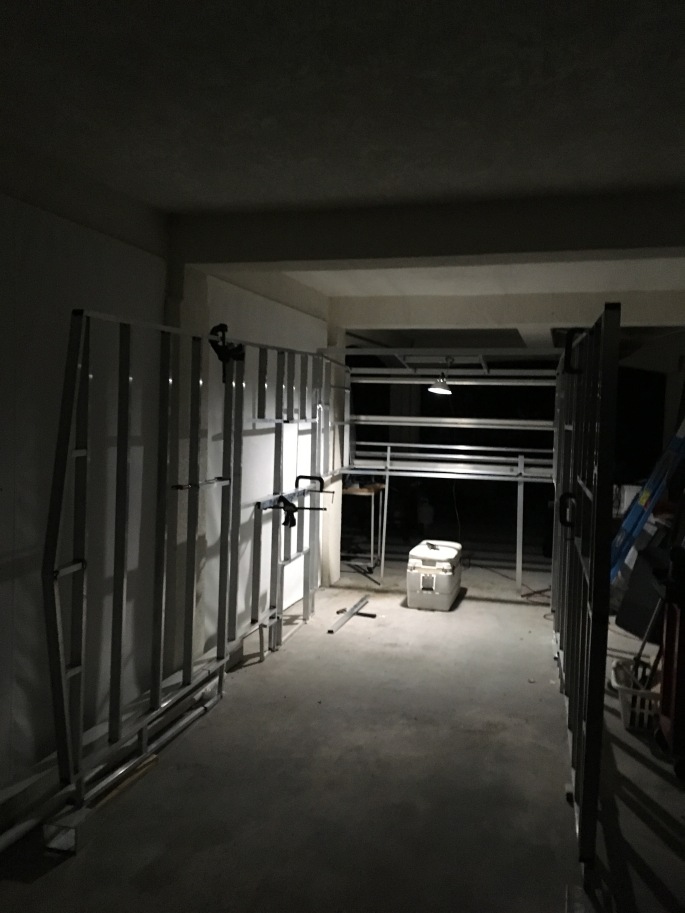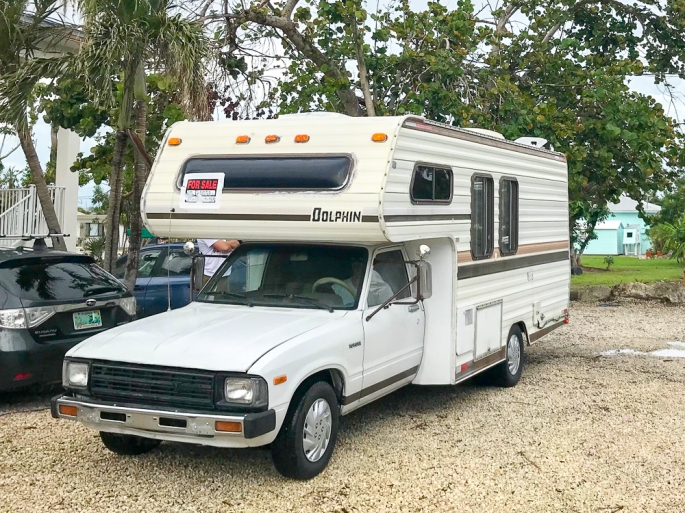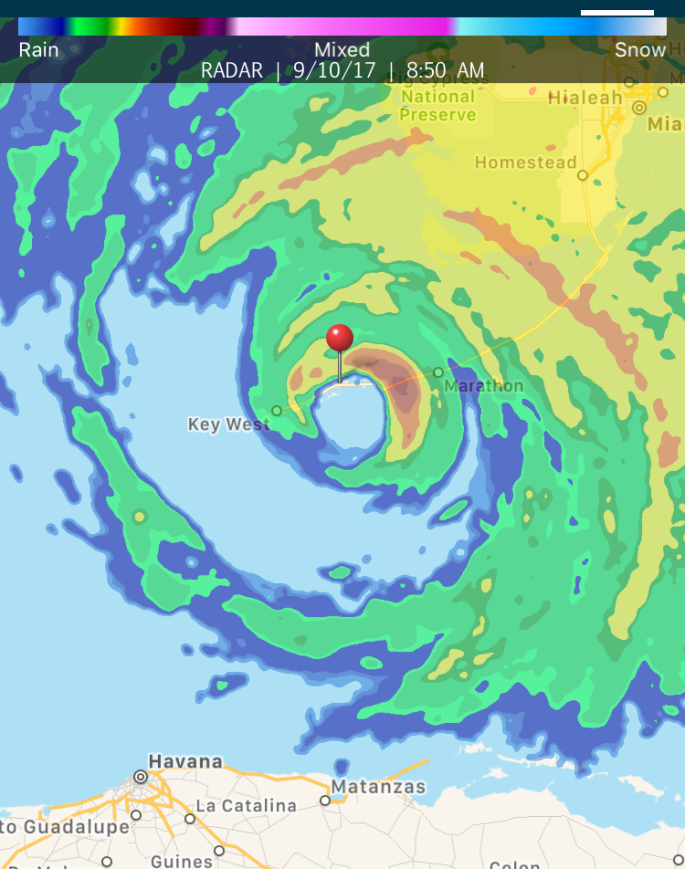One of our stories just came out in the Summer issue of National Parks Magazine. Hats off to the publishers, the folks at the National Parks Conservation Association who work tirelessly to preserve our open spaces — as well as to the hundreds of thousands of refugees and immigrants who have risked and are currently risking their lives to try to fill basic human needs and find a safe place to live with their loved ones. Read on to find out secrets about Dry Tortugas National Park as well.
Tag: beautiful
A Bit of Bhutan at the Tipping Point
In the Himalayan kingdom of Bhutan, they decorate their cargo trucks with bright colors, and often paint wild faces on the differentials. I am not sure all of the symbolism behind that, but certainly warding off ill-meaning spirits and keeping the driver safe are part of it. Yesterday I got the fun job of painting the gas tank, axle and differential with a protective bright orange paint Steve had picked out. We won’t be able to see much of it once it’s back together, which is good, since my painting skills are lacking, but I do hope the festive color will serve a similar purpose. I may just need to sneak back in there and add a couple of eyes.
Yesterday we also passed a milestone on the motorhome — instead of taking it apart, we finally put the first few pieces back together. The amazing Calvin nestled the engine back where it goes under the hood. It has a lot of shiny new parts on it, and no longer are there mystery hoses and wires flapping in the breeze. Meanwhile, the intrepid Steve welded a new bracket to hold the gray water tank, which we moved from the very back to a bit farther forward for better weight distribution. He also welded much needed aluminum bracing to reinforce the floor.
The reanimation of our adventure mobile; recap, perspective, and moving forward
Just a little while back, we dove into this adventure of gutting and remodeling a 1984 Dolphin motor home that had served as a temporary house for hurricane Irma victims. We spotted her in the parking lot of one of our local grocery stores, where one of the over one thousand families that lost their home were living. They had received a FEMA trailer, and were selling their dolphin to recoup their purchase monies.
Gutting became rebuilding, and we undertook the task of fabricating a new body; upgraded to lightweight and waterproof aluminum with a 2″ wall thickness. We also purchased nearly every engine part needed to perform a complete and “deep” tune up to awake our Toy power plant. (haha) We knew it would be a while until we could address the mechanical maintenance due mostly to the fact that we need to get the interior dried in to prevent water damage to the cab. The framework for the body is coming along well and is teaching me first hand that this undertaking is quite a bit more complicated than initially meets the eye. Windows, openings, weight distribution, roof vent placement and arrangement along with wiring considerations are all part of the fun. It is coming along well, and the learning aspect of this process has been fantastic. As you read in our previous post, (if you haven’t then you should read it), we have been incredibly fortunate and are immensely thankful for our luck in meeting our new friends, Erica and Calvin Rowley. Calvin is a Toyota 22R wizard in my opinion and with his knowledge and love for these die hard power plants; ours is getting a new lease on life. (check out Erica and Calvin’s blog: http://chasingbootyadventures.com/
After asking Calvin and Erica if they would be interested in helping us out with the engine work; we took a look at the condition. Well, more accurately, Calvin took a pretty deep look. The doctors’ findings were not great, or even good for that matter. Coolant in the oil, several of the systems under the hood were incorrectly connected, or not properly operating at the least. He gave it to us straight and pretty much informed us that this project would require a top to bottom renovation as well. Out came the engine, and apart came most everything else under the hood. The engine has been inspected internally, and any questionable parts are being replaced.
Engine work and engine bay upgrades:
All new gaskets, including the head gasket; new oil and water pumps; upgrade to double row timing chain; Weber 34/36 with jet kit for economy/ power fine tuning; fuel regulator; new fuel pump; valve job; complete and proper de-smog; upgrade to heavy duty gm brake master cylinder, upgrade to 160 amp heavy duty Gm alternator, upgrade to electric fan kit with thermostat control; eliminate smog air pump; eliminate in cab air conditioner and compressor; ceramic coated equal length headers; stainless steel low restriction muffler and aluminum exhaust pipe; (2.25 inches diameter).
Suspension work and upgrades:
New front and rear shocks; new rear inner and outer bearings; change rear dif oil, new rear brakes, inspect and repack front bearings, new upper and lower ball joints, new steering stabilizer, new air lift rear system with in cab air controls, inspect and check front brakes.
Frame work and upgrades:
We have completely removed the camper from the frame. We also removed the floor from the frame chassis. There were spots in the floor that were “spongy” and since we were faced with the choice of replacing the floor we chose to take advantage of the extra work space. (the space to install the air bags, reinforce the floor support, and re-wire the vehicle tail light wiring.)
This past weekend we have painted the frame and we are in the process of installing floor supports. Calvin is in the assembly phase of the engine and is preparing to re-install the engine in the coming days. For the floor frame system, we are using aluminum for weight savings to fabricate the bracing. We are also going to try a composite floor to save weight and increase interior comfort. We are fabricating the floor using a 1/2″ sheet of marine plywood, 3/4″ thick rigid foam insulation with 3/4″ x 3/4″ aluminum support stiffeners, and sandwiched with another 1/2″ sheet of marine plywood on top. We plan on gluing the floor panels together. The exterior bottom of the floor panels will have .040 aluminum sheeting to protect the floor from water and deterioration. Hopefully the result will be a well insulated, strong and light floor system.
Smaller, Sweeter, Cheaper
We were pushing a shopping cart full of Thanksgiving ingredients through the Winn-Dixie shopping center on Big Pine Key last night when we noticed something had changed. The ’84 Toyota Dolphin motor home that had been parked there for a month was suddenly sporting a brand new “for sale” sign. Its owner agreed to meet us at the uncomfortable hour of 8:30 this morning. This is a time of day most people do not enjoy in the Keys.
He and his wife had been living in the Dolphin since they lost their house to hurricane Irma. They had bought it up in the bizarre failed-development community of Lehigh Acres on the mainland. A few days ago FEMA finally came through with a brand new trailer for them. They decided to ditch the Dolphin to pay for a new roof. Despite a number of people eyeing it from afar while we examined it, he gave us a few days to decide. We only needed an hour.
It has just 81,000 miles and measures about 18 feet. It mostly fits in a standard parking space, and set us back $3,600. The frame is solid. It needs a little TLC under the hood, but it runs well. We had considered a bigger model, but the simplicity of the Toyota and the much smaller price tag won. Steve will surely want to add more on the technical side of the blog. Signing off to go begin the renovation. Woohoo!
Destination Homer, Alaska…. (the other end of the road!)
We have decided that this summer is the time for an amazing road trip adventure! An adventure that we plan on documenting, from the beginning of the journey; motor home search and purchase, until the end; our arrival and time in Homer. We are not certain of the exact parameters of this project yet; maybe a travel book, maybe some sort of destination guide, or perhaps just a project that we enjoy while in Homer or on the way. I guess we will see, and we invite you to join us if you like.
Motor home search and purchase:
When we started to discuss our adventure, we were back and forth between our mode of primary travel and lodging. After having several lengthy discussions, debates, and agreements; we think that for us and our destination it will be best to drive a motor home. A motor home will afford us the comfort and stability of our own space, (won’t have to pack and unpack again and again as we would if we were car camping/ hotel staying), and we can centralize all of our asset’s and be mobile or static in a moment if necessary. (Unlike a travel trailer that we would have to “dock” and mobilize). Our mobility while staying at destinations will be an off road/ on road enduro motorcycle that will probably be in the 250-400cc range. Easy to carry on a hitch platform, very fast and easy deployment, and decent accessibility. This of course is in addition to our bicycles and long boards. Now that we have established that we want to acquire a motor home; we have been back and forth between a mini motor home, and a larger class c. We were looking at the Toyota models from the late 80’s into the early 90’s, but then we found out that my parent’s friend is selling a pretty sweet class c with two slide outs. As we mulled over the pro’s and con’s, it seems that the fuel economy is not a large difference so it really comes down to comfort and usefulness. The toyota models, although very attractive with their nostalgic and mini allure; are older vehicles with marginally powered engines that are most certainly going to need love to get them in top shape for a 6000 mile each way journey. Unfortunately; our day job work is extremely busy after the hurricane and I am a bit short on extra time to take on a project like this. (We have a “WRX wagon bugeye project happening as well as a “camper Boat” project so we need to slim down the roster. 😉 All of this taken into account, we are looking for a sweet class c that we can set up in for the long haul, comfortably, and carry our local transportation easily. We are looking for a class c with slides and we really need to find one for 15k or less. We will keep you posted on the friend of my parents, as it is a beautiful 30′ class c with two slides that is worth an easy 25k. The owner is selling it for 19k; still a little out of our range but we will see what happens….. (we emailed him asking for his best deal – we’ll let you know as soon as we know)
Merlin Migration
Every fall these fierce little flyers come back to the Keys, where they spend the winter, or just stop off for a meal before heading to locations further south. This one’s been hanging around for a week or so now, often pausing for a lookout on the Jamaican dogwood tree (the leaves are sparse, but returning nicely after hurricane Irma). Merlins eat the cute little songbirds mostly, and sometimes dragonflies. A reality check, but such is the cycle of life. When they are not here, they’re generally up in Canada for mating season.
Hurricane Irma, Tales from the Lower Keys
Photo: Radar of Hurricane Irma making landfall over the Florida Keys. The red pin is our house on Cudjoe Key. Phone screenshot was taken from our evacuation site in Sebring.
The trip odometer read 6,965 miles when we pulled into our driveway on Cudjoe Key. It was Sunday. We had just returned from an epic road trip that included traveling to Wyoming to witness the solar eclipse. Three days later, we pulled out of our driveway as evacuees. We never imagined that our tiny Key would soon be infamous as the epicenter of one of the most powerful storms on record.
The eye made landfall over our house, and 12 hours later hurricane Irma centered her eye over our evacuation site in Sebring, Florida. The aftermath is an experience to behold: the largest evacuation in our country’s history, millions without power, a swath of destruction, and a coming together of kindness and resilience.
We were fortunate to be able to return just a few days after the hurricane had passed, reporting for local media. Over the coming days, we will post some of these experiences, and the tales of those we meet along the way, as well as recovery resources for those living in the Keys. If you’re interested, please follow the blog and feel free to contact us: karuna@quixotictravelguides.com and steve@quixotictravelguides.com.
Sand Key Lighthouse
Oct. 1, 2016: The Sand Key Lighthouse 7 miles off of Key West is often full of seabirds, including pelicans, magnificent frigatebirds, cormorants and terns. The structure itself has been part of several amazing history tales, including an 1846 tragedy, when a hurricane obliterated it along with the keeper and his family. Today the snorkeling here is among the best in the Keys, thanks to its super-shallow structure and vibrant marine life. Often seen here is everything from sea turtles to parrotfish, barracuda to anglefish. Read about both in our Key West & the Lower Keys Travel Guide, available on amazon.com.
Rainbow to Nowhere
Sept. 24, 2016: We had spent a good part of the afternoon outrunning building thunderheads and dark walls of rain. The little skiff went about 80 miles that day, keeping us safe yet in suspense through building waves, miles offshore. When we made the final turn for home, an ominous rainstorm blocked our path. We’re going to just have to go through this one and finally take our punishment, we thought, as we prepared our gear for a deluge. But as we drew closer, the storm rapidly broke up, welcoming us home with a rainbow to nowhere. Any weather bugs out there know anything about this phenomenon?
Great White Heron
Sept. 10, 2016: The great white heron is a homebody. Out of the whole world, they choose to only live in the Keys and parts of the Everglades. Nearing 5 feet tall with 7-foot wingspans, they are the largest of all herons. There is still some scientific debate as to whether they are just a color morph of the great blue heron, but many are leaning toward them being a separate species, in part because they are larger than the blues, don’t share their propensity to migrate thousands of miles, and as John James Audubon pointed out in the 1830s, have decidedly more pointed tempers, at least 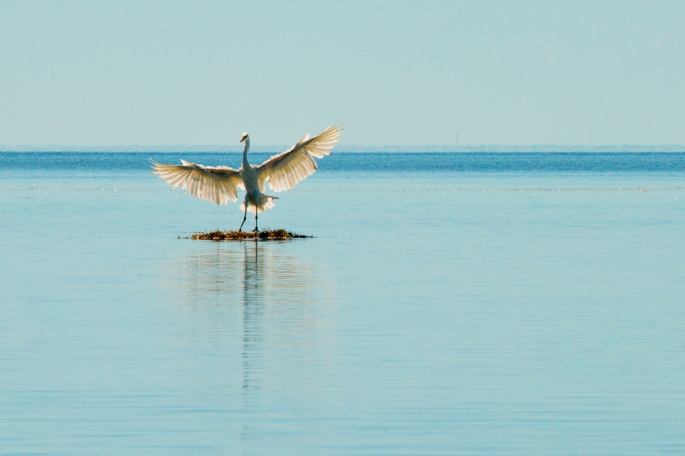 when forced into captivity. They can be distinguished from great white egrets by their yellow legs (egrets’ are black) and seen in the Keys wading and fishing near shallow-water mangroves, and especially in their namesake Great White Heron National Wildlife Refuge.
when forced into captivity. They can be distinguished from great white egrets by their yellow legs (egrets’ are black) and seen in the Keys wading and fishing near shallow-water mangroves, and especially in their namesake Great White Heron National Wildlife Refuge.
